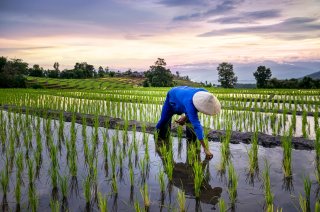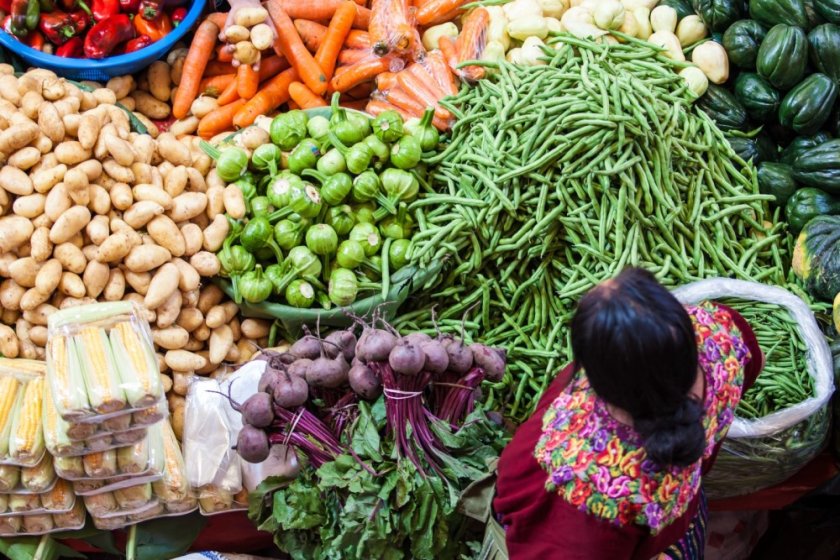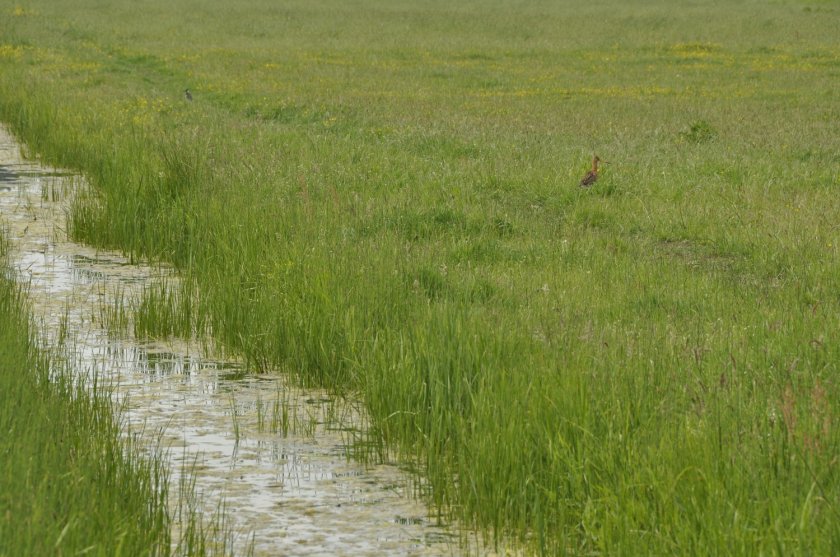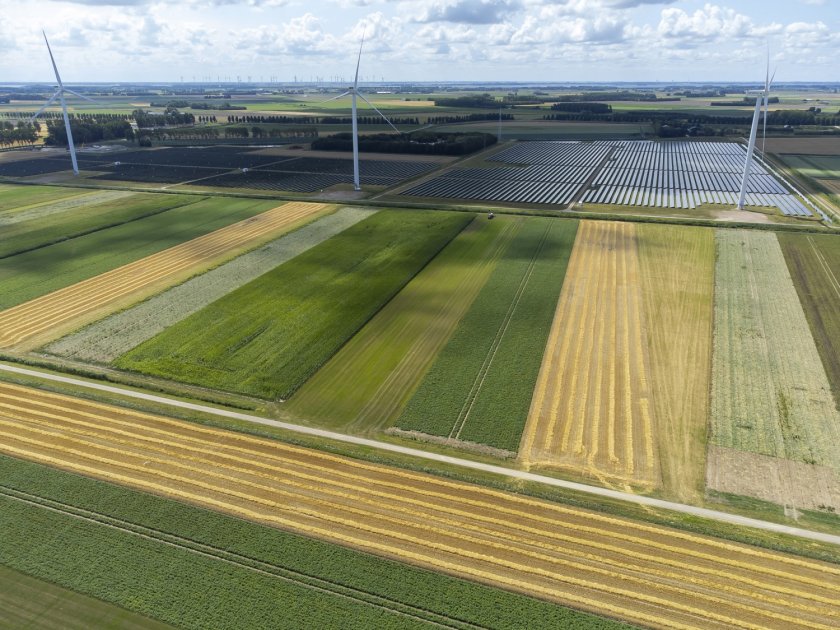
Background
What we can learn from nature-inclusive farmers in Thailand and the Netherlands
To bring about a more sustainable future, we need to drastically change what we eat. Wageningen University & Research (WUR) scientists offer a taste of different food systems by looking at local initiatives for sustainable food production. Like biodiversity-positive Dutch farmers and indigenous people in Thailand who govern their own production forest.
The ingredients for more sustainable food systems are often repeated by scientists, governments and international organisations. We should eat more plant-based foods instead of meat and dairy. We ought to consume local produce. Food production should be environmentally friendly and biodiversity-positive.
Turning these messages into action, however, is not an easy task. ‘A whole system rethink is needed’, says Jeanne Nel, head of the Biodiverse Environment Programme at WUR. ‘One which emphasises inclusive and equitable decision-making and removes power concentration in the current food system.’ Much of Nel’s research is dedicated to transformative change. ‘If you work on just one thing, you’re much less likely to succeed. You need to work on many things at once. For example, the financial sector needs to account for environmental impact in their investments. And at the same time, governments, food processing companies and supermarkets can make nature-inclusive food a more affordable and convenient option by carefully designing urban food systems.’
In order to learn more about transforming our food system, Nel and other Wageningen researchers study local initiatives by people who produce food sustainably every single day. These fresh perspectives show how food production can actually make a positive contribution to biodiversity.

Nature-inclusive farming
‘In our minds, we have created a divide between agriculture and nature’, says Judith Westerink, Senior scientist Landscape Governance. ‘But in many cases, those two aren’t really separate. Much of what we call nature, like heathlands and pastures, is actually agriculture or a by-product of food production.’
Westerink leads a research project called Boeren voor Natuur (Farming for Nature), in which agriculture and ecology are integrated as much as possible. The project offers farmers long-term financial compensation to organise their business operations in a way that is extensive (rather than intensive) and profoundly nature-inclusive. Westerink: ‘If we organise food production in a good way, we can reap the benefits for biodiversity.’
The farmers who participate in Farming for Nature are bound to certain limitations. To ensure circularity, they are not allowed to use feed or manure from outside their own farm. Water levels also have to be higher than usual, and certain “unproductive” landscaping features are mandatory. Nature-friendly embankments, for instance, which offer amphibians a place to lay their eggs and provide shelter for meadow bird chicks. Westerink gives another example: ‘On the Twickel estate in Overijssel, a farmer added tree hedgerows. These are like highways for birds and mice.’

Rather than overwhelming farmers with rules and regulations, Farming for Nature leaves a lot of room for self-governance and entrepreneurship. As a result, the farmers involved in the project are very satisfied, says Westerink: ‘They keep getting better at how to handle the limitations. Monitoring the quality of their soil, turning biomass into compost, things like that. They have to apply all of their skill and craftsmanship, which they really enjoy.’
For Westerink, it is clear that society can learn a lot from projects like hers. ‘I’ve noticed that many farmers in the Netherlands feel uncertain, as they want to produce food in a biodiversity-positive way but find few options available to them. We should really use the experience we have to create possibilities for farmers. In a focused way, tailored to the geography and culture of the area.’
A beautiful production forest
Maria Tengö, Special Professor in Human-Nature Relationships in the Anthropocene, shares many of Westerink’s points of view. ‘Farmers today have a lot of knowledge, but they are not usually seen as knowledge holders. In Sweden, where I live, most of the biodiversity we want to protect requires continued farming. A biodiversity-friendly kind of farming, of course, and not an intensive, large-scale kind.’
In her research, Tengö works at the interface between scientific knowledge and other kinds of knowledge. The latter includes knowledge held by indigenous peoples on how to protect and manage people and nature together. Like Dutch and Swedish farmers, indigenous people around the world have knowledge about biodiversity and food production that often isn’t recognized by scientists and policymakers. Tengö: ‘There is a need for a shift in the view of other ways of knowing, and how they can cross-fertilize each other.’
Through these dialogues, we want to create platforms where knowledge can be articulated and mobilised. That’s how dialogues can become a tool for changing mindsets.’
To illustrate this point, Tengö paints a scene from Northern Thailand. There, indigenous people maintain a traditional farming system in a forest. ‘There are rice paddies on the valley floor, rotational fields on the slopes, and catchment forests on the ridges. The inhabitants have ceremonies and rituals that guide how to plant and where to plant. It is part of their governance system, where people come together and make collective decisions.’ However, the Thai government has come to see this beautiful production forest as a nature reserve, and wants to evict the people who shaped it. ‘Their knowledge and their way of generating values for food production as well as biodiversity are not recognized’, Tengö concludes.
In collaboration with IPBES, the Intergovernmental Science-Policy Platform on Biodiversity and Ecosystem Services, Tengö organised dialogues between indigenous people, scientists, government officials and other actors. One of these talks revolved around pollination, which forms a core part of the indigenous system and which is critical for both biodiversity and food production. ‘Scientific knowledge is well-articulated, whereas local indigenous knowledge isn’t. Through these dialogues, we want to create platforms where that knowledge can be articulated and mobilised in ways that are useful for all involved. That’s how dialogues can become a tool for changing mindsets.’
Changing the system
Clearly, a food production system that is beneficial to biodiversity is possible – if we organise it properly. Jeanne Nel has another promising agro-ecological practice in mind: mixed cropping systems. WUR started designing these innovative farming systems over ten years ago, successfully growing many different kinds of crops together while including flower banks for biodiversity, pollination and natural pest management. ‘But this agricultural method will require broader changes. Most importantly, the food system beyond the farm gate will have to be geared towards accepting these newly-established diverse crops, rather than monoculture crops. Now, it’s seen as the farmer’s problem if they change their way of working for our benefit. How do we spread the responsibility more equitably in the food system?’

Nel emphasises once again that the entire food system will need to change in order to realise a more sustainable future. And the most important transition, she says, won’t come from food taxes or prices. ‘In the long term, the implicit societal values need to change. Will people learn to value nature more? Are they willing to question what is considered normal? That is what transformative change is really about: shifting values and decision-making power.’ It seems that, on various local levels, these values have already started to shift.